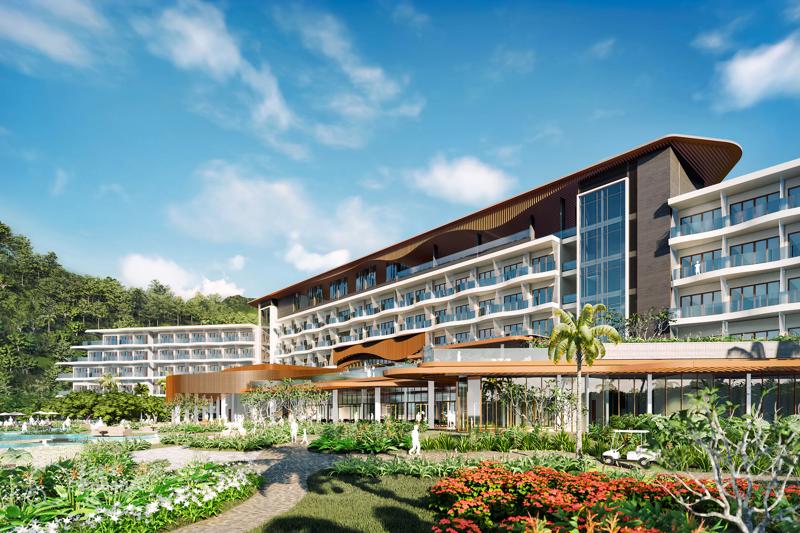The opportunities for Vietnam’s hospitality industry are numerous, with some developers basing their decisions on average market data, assuming that resorts or hotels are all the same, according to Savills’ research released on September 28.
The global hotel market is on the path to recovery, with occupancy in most regions nearly reaching pre-pandemic 2019 levels, though the Asia-Pacific region still trails. In Southeast Asia, Singapore has seen the greatest market recovery, primarily because of strong rates.
However, Vietnam is still struggling to surpass its 2019 occupancy and rate benchmarks.
“We have short, medium, and long-term causes and solutions to the challenges we face,” said Mr. Mauro Gasparotti, Director of Savills Hotels. “The short-term problem is still that key source markets like China are strained. China held a 32 per cent share of all of Vietnam’s international arrivals in 2019. Another influential factor is the increasing prices of long-haul flights, which has limited the return of some European markets. Vietnam posted a substantial 38 per cent decline in visitors in the first eight months of 2023 compared to the same period of 2019.”
Asian source markets to Vietnam remained at 32 per cent below 2019 levels, with South Korea leading as the dominant source market but still lower compared to 2019. China is gradually recovering but only reached 28 per cent of its 2019 arrivals, with 950,000 visitors. The Americas and Oceania markets are close to pre-pandemic levels, with 900,000 arrivals, primarily from the US and Australia. However, they remain 8 per cent below 2019 figures.
Another crucial short-term factor straining performance is the oversupply in certain destinations. This results from significant new supply in recent years, primarily beach destinations like Phu Quoc Island, Nha Trang, and Da Nang, which added approximately 15,000 additional rooms every year since 2016. This has resulted in a two-fold increase in base supply within six years. As a result, hotels in Vietnam are not only facing reduced demand but also stronger competition.
The current situation has positioned Vietnam’s performance behind that of regional competitors like Thailand, the Philippines, Indonesia, and Malaysia. These competitors reached occupancy of above 50 per cent and Singapore’s occupancy was nearly 75 per cent, but occupancy in Vietnam struggled at 40 per cent in the first eight months of 2023, or 20 ppts below pre-pandemic levels.
Vietnam’s recovery had been uneven across different destinations. Nha Trang and Phu Quoc Island have faced challenges increasing occupancy rates, with Phu Quoc Island struggling to reach 30 per cent, one of the lowest in Southeast Asia. Nha Trang - Cam Ranh had slightly higher occupancy levels but at low rates of below $100 per room per night. Conversely, main cities are performing well, with Ho Chi Minh City and Hanoi over 60 per cent occupied, and while this is below 2019 levels it is certainly better than beach destinations.
In the upper midscale to luxury segment, room rates are holding up better than occupancy. Nationwide, rates averaged $120 per room per night in the first eight months of 2023, approaching 2019 levels.
Domestic demand is still driving tourism recovery in Vietnam and compensating for the lower rate of international visitors. Domestic visitors reached 86 million in the first eight months of 2023, increasing 7.8 per cent year-on-year. This is a very healthy indicator of Vietnam’s potential in the medium and long term.
In addition to addressing short-term challenges, Vietnam should also concentrate on the medium and long-term opportunities that the industry can create and work collectively towards achieving them.
Mr. Gasparotti emphasized that in the medium term, the market focus should be on increasing international marketing campaigns and destination marketing for the single areas.
He noted that the extension of visa validity to 90 days is encouraging news and establishes a strong foundation for both leisure and business travelers, enabling them to plan their trips to Vietnam without limitations on entries.
However, Vietnam’s tourism industry must proactively redefine its destination image, enhance its tourism offerings, and reinvigorate the market, he believes.
Promotions in other countries and the establishment of overseas sales offices are crucial for generating demand, especially during this period of intense competition between different countries to attract tourists. When comparing destinations like Phu Quoc Island to other islands such as Phuket, Bali, and Boracay, it becomes apparent that destination awareness for the Vietnamese island is much lower. Similarly, destinations like Ho Tram, Quy Nhon, and Mui Ne would benefit greatly from international marketing efforts, particularly those with high-quality resorts.
“If we consider the luxury market, for example, it has among the greatest potential in Vietnam,” Mr. Gasparotti added. “Whether in cities, mountains, or beach destinations, the ultra-luxury segment has consistently demonstrated strong growth worldwide, even during past market turbulence. Vietnam has much more to explore in this sector. The market has already seen several ultra-luxury resorts delivering positive results. The mid-segment targeting groups and young travelers such as the limited-service model also has potential. This model, which is less costly to develop, can be a good fit for destinations experiencing rising demand.”
“There is no doubt that the hospitality industry will continue to play a fundamental role in the country, creating jobs and giving rise to new destinations, among other benefits,” he concluded. “However, for Vietnam to remain competitive, the market must change and update its offerings with a focus on local culture and the creation of communities. There also needs to be better infrastructure and increased attention to sustainable tourism. Attention should shift towards sustainability, eco-tourism, senior living products, and medical and regenerative tourism. However, there is also the possibility of succeeding by redirecting some attention to the entertainment elements of the hospitality industry. Several aspects of the industry’s global trends should be clearly understood by both private developers and local authorities, as these will have a profound impact on the evolution of tourism in Vietnam.”









 Google translate
Google translate